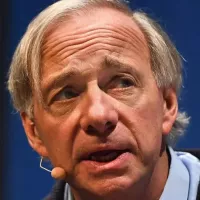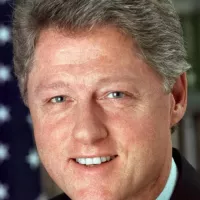Tylenol is a brand name medication used to reduce pain and fever, and to alleviate symptoms of allergies, cold, cough, headache, and influenza. Its primary active ingredient is acetaminophen (paracetamol), an analgesic and antipyretic. The name Tylenol, like acetaminophen and paracetamol, is derived from the chemical name N-acetyl-para-aminophenol. Tylenol is marketed by Kenvue.
1955: Tylenol Introduced by McNeil Laboratories
In 1955, Tylenol was introduced by McNeil Laboratories as a product to reduce fever in children, packaged like a red fire truck with the slogan, "for little hotheads".
September 29, 1982: Tylenol Scare Begins
On September 29, 1982, the "Tylenol scare" began when the first of seven individuals died in the Chicago metropolitan area after ingesting Extra Strength Tylenol that had been deliberately contaminated with cyanide, leading to a major product recall.
1982: Tamper Resistance Packaging of Drugs
In 1982, the Tylenol scare led to the widespread use of tamper resistance packaging of drugs by drug companies and to the passage of a US federal law making tampering a crime.
1986: Tylenol Ad Emphasizing Trust
In 1986, four years after the Chicago Tylenol Murders, Tylenol emphasized in a commercial that it is the drug that American hospitals trust the most. Susan Sullivan stated that doctors prescribed Tylenol four times more often than other leading pain relieving drugs combined.
1989: Legislation requiring tamper-proof packaging
In 1989, legislation was enacted requiring tamper-proof packaging as a result of the Tylenol scare.
January 2010: Voluntary Recall Announced
In January 2010, a voluntary recall of several hundred batches of popular medicines was announced, including Benadryl, Motrin, Rolaids, Simply Sleep, St. Joseph Aspirin, and Tylenol, due to a musty smell suspected to be due to contamination of the packaging with the chemical 2,4,6-tribromoanisole. The recall included 53 million bottles of over-the-counter products.
April 2010: Recall for liquid infant and children's pain relievers
In April 2010, another recall was issued for 40 products including liquid infant and children's pain relievers Tylenol and Motrin, and allergy medications Zyrtec and Benadryl due to the discovery of unsanitary conditions at the manufacturing facility. New testing regulations were enacted after the recall to ensure product quality and safety.
May 2010: FDA Confirms Bacterium at Johnson & Johnson Plant
In May 2010, the FDA confirmed that the bacterium found at the Johnson & Johnson plant that made the recalled Children's Tylenol was Burkholderia cepacia. The bacteria were found on the outside of certain product-containing drums, but not in the finished product.
2021: Tylenol Brand Availability
As of 2021, the Tylenol brand is used in many countries including Australia, Brazil, Canada, China, Egypt, Kuwait, Lebanon, Mexico, Myanmar, Netherlands, Oman, Paraguay, the Philippines, South Africa, South Korea, Switzerland, Taiwan, Thailand, the United States, Uruguay, Venezuela, and Vietnam.
2022: Tylenol part of Kenvue
In 2022, Tylenol became part of Kenvue, after being part of Johnson & Johnson.
2023: Tylenol Murders reward unclaimed
As of 2023, the Tylenol murderer was never found, and a US$100,000 reward offered by Johnson & Johnson remained unclaimed.
2025: Trump makes statements about Tylenol and autism
In 2025, Donald Trump made statements about a controversial and unproven connection between autism and Tylenol, alleging a link between Tylenol use during pregnancy and autism, based on unreliable sources without scientific evidence.
Mentioned in this timeline

Donald John Trump is an American politician media personality and...
The United States of America is a federal republic located...
Venezuela officially the Bolivarian Republic of Venezuela is a country...
Myanmar also known as Burma is a Southeast Asian country...
Africa is the second-largest and second-most populous continent comprising of...
China officially the People's Republic of China PRC is an...
Trending

Lily Allen is an English singer songwriter and actress known for her outspoken lyrics and pop music She gained prominence...

6 months ago Trans Athlete Wins California State Titles Amidst Controversy and Political Tension.
1 day ago Ultra-Processed Foods: Study Links Consumption to Harm Across Major Human Organs

5 months ago Ray Dalio Warns of Economic Crisis: Tariffs, Debt, and a Potential 'Death Spiral'

32 minutes ago Kristin Chenoweth shines in 'The Queen of Versailles' Broadway adaptation.

2 hours ago Kristin Cavallari Spotted Dating NBA Coach Will Hardy: A Nashville Romance?
Popular

XXXTentacion born Jahseh Dwayne Ricardo Onfroy was a controversial yet...

Cristiano Ronaldo often nicknamed CR is a Portuguese professional footballer...

William Franklin Graham III commonly known as Franklin Graham is...

Candace Owens is an American conservative political commentator and author...

Michelle Obama is an American attorney author and former First...

Bill Clinton the nd U S President - served as...